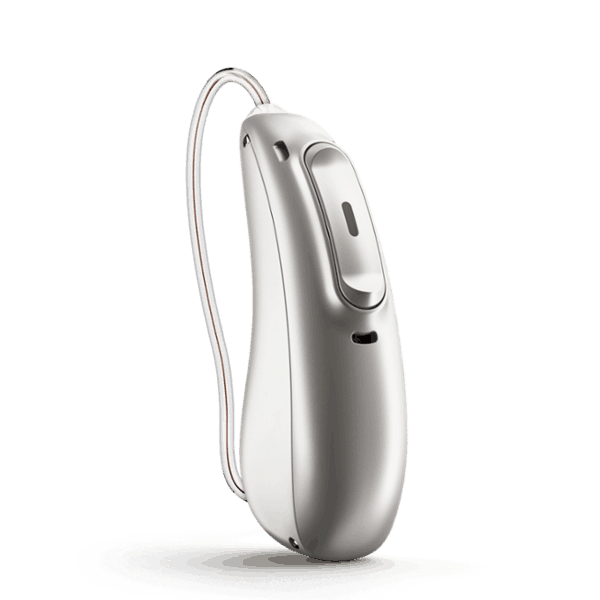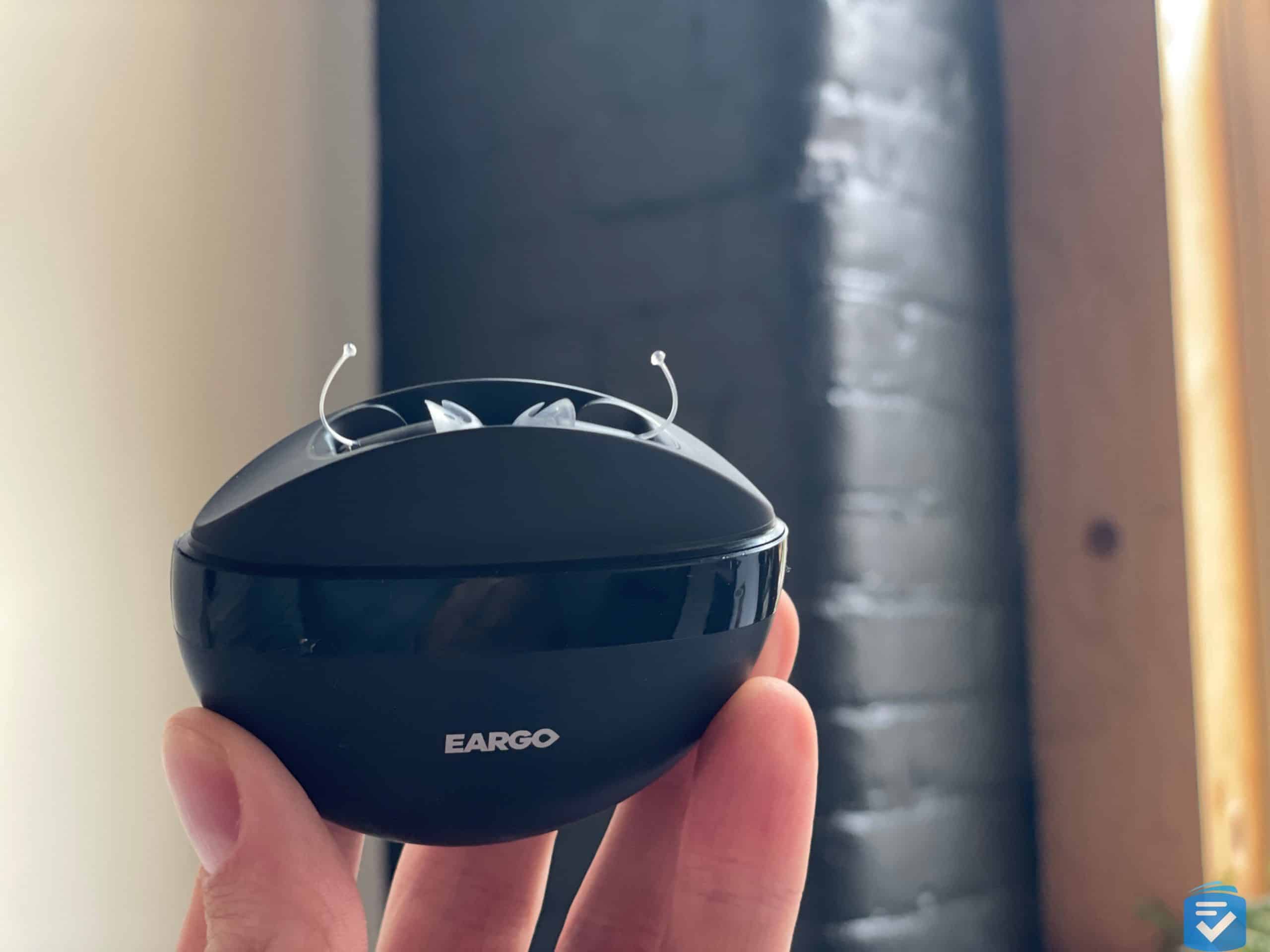
Inogen Portable Oxygen Concentrators: Devices and Pricing

Your doctor has prescribed supplemental oxygen, but you’re not sure where to start. Oxygen tanks may have lower up-front costs and come in smaller sizes, but oxygen concentrators don’t need to be refilled, are less flammable, and can be used for up to 12 hours. Of course, there’s a higher initial cost, but they’ll be cheaper in the short-term, as oxygen concentrators last up to 1,500 hours, according to Inogen.
Inogen revolutionized older adult respiratory care in 2001 when it introduced the first-ever portable oxygen concentrator that did not require refills. Instead, the machine purified oxygen from its surrounding environment, eliminating the need for bulky oxygen tanks. More than 20 years later, Inogen continues to give people who use oxygen therapy the confidence, freedom, and independence of an active lifestyle.
In this rundown, I’ll provide a thorough overview of Inogen, including its systems, how they function, what they cost, and their overall value. Let’s take a closer look.
Pro Tip: New to the world of portable oxygen concentrators? Check out my guide to portable oxygen concentrators to learn how the technology works and how much they cost.
Inogen Products and Pricing
As of April 2025, Inogen sells three oxygen concentrators, two portable ones and one stationary model. The concentrators range in price from about $1,700 to $3,300. (Inogen also offers the One G5, a portable system available to rent. Very little information is available about it, however, so I won’t be covering it below.) In addition to the individual oxygenators, there are also what the company calls Freedom Bundles, which combine a home concentrator and portable concentrator for around $4,250 to $5,300.
Inogen System Pricing
Here are the prices of individual concentrators, if you’re interested in either a home or a portable concentrator but not both.
| System | Inogen Rove 4 | Inogen Rove 6 | Inogen At Home |
|---|---|---|---|
| Base unit price | $2,995 | $3,295 | $1,703 |
| Portable | Yes | Yes | No |
| Maximum oxygen flow time* | 5 hours, 45 minutes | 12 hours, 45 minutes | Unlimited |
| Expected service life | 8 years | 8 years | Not listed |
| Decibel level | 39 | 37 | Not listed |
*refers to maximum flow time with double battery
If you’d like to bundle your home concentrator with a portable version, the price will depend on the model and warranty. Currently, the Inogen At Home comes with a three-year warranty, not a lifetime warranty.
| Device/warranty | Inogen At Home, 3-year warranty |
|---|---|
| Inogent Rove 4, 3 year warranty | $4,247 |
| Inogent Rove 4, lifetime warranty | $5,022 |
| Inogent Rove 6, 3 year warranty | $4,767 |
| Inogent Rove 6, lifetime warranty | $5,352 |
Inogen G4 System
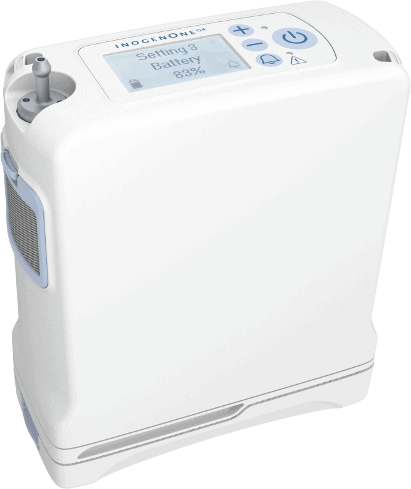
Known for its portability, the G4 is the smallest Inogen system, which makes the FAA-approved device perfect for air travel. Weighing only 2.9 pounds, less than an average toaster, the G4 won’t hold you back or slow you down like heavier tanks can.
The G4 base unit, priced at $2,995, matches the purity of larger concentrators and is clinically validated for 24/7 use. Its three flow settings are fewer than its predecessor, though, which limits its accommodation of prescription changes. It’s a trade-off you may be willing to make for such a compact and lightweight system.
Another trade-off? This lightweight system’s double battery lasts only five hours and 45 minutes before needing a charge. That may be fine if you are not always on the go or if you have breaks during your day, but I’d recommend purchasing extra batteries since it sometimes takes several hours to reach a full charge.
The G4 starts to make up for its lack of battery power with the addition of the Inogen Connect app, which helps you monitor battery life, update your system’s software, and access customer support.
Inogen G5 System
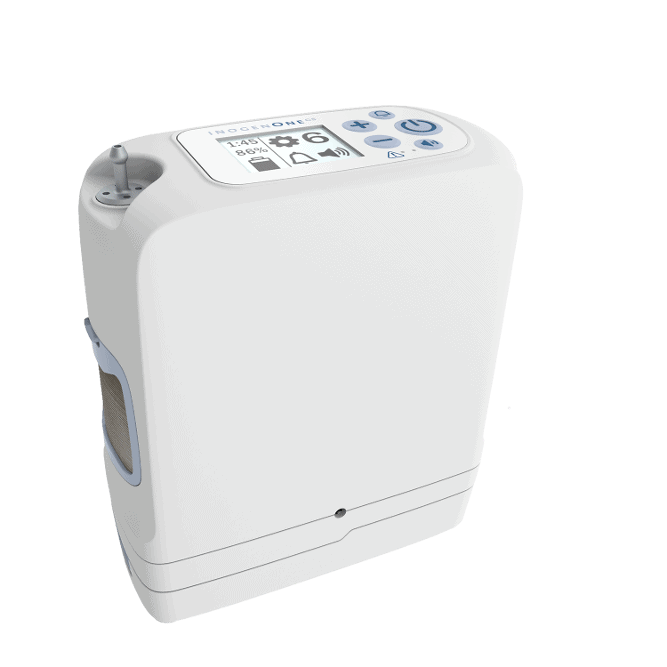
Delivering the most oxygen per pound of any concentrator on the market, Inogen’s portable G5 system is priced at $3,295. Its single battery lasts more than six hours, and its double battery can last up to 12 hours and 45 minutes. Compact and weighing less than 5 pounds, this machine fits easily in a tote bag or backpack.
Like all of Inogen’s concentrators, the G5 is clinically validated for 24/7 use. Similar to the G4 system, Inogen G5 comes with access to the Inogen Connect app.
Inogen at Home
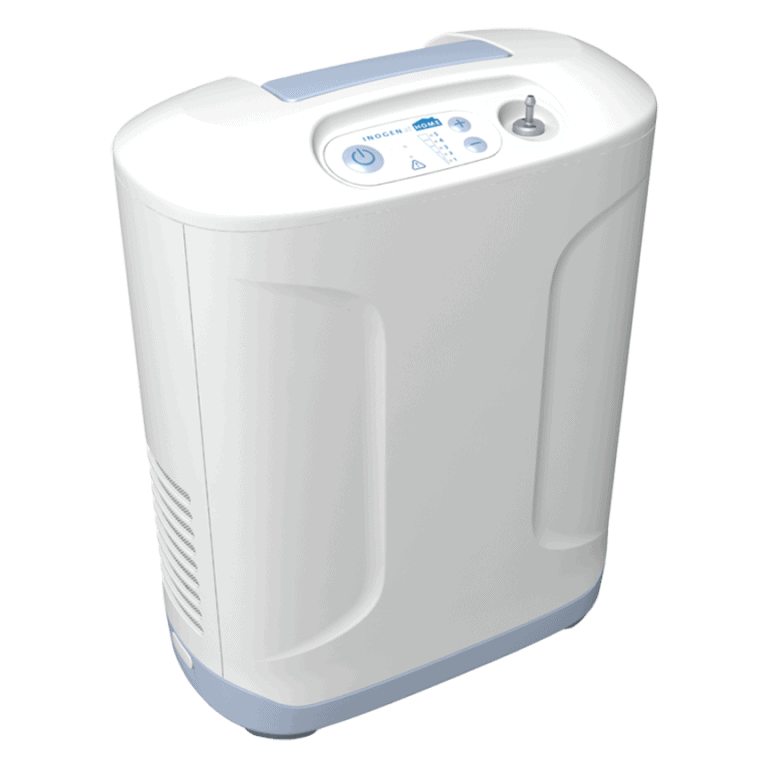
Rather than providing pulses of oxygen like Inogen’s other concentrators, Inogen At Home provides five liters of continuous oxygen. The ultra-quiet system is one of the most energy-efficient oxygen concentrators on the market, which can save you up to $300 a year in utility costs.
Most at-home oxygen concentrators weigh about 40 pounds, but Inogen At Home comes in at less than half of that at 18 pounds. It’s designed for stationary use, but many people move their oxygen equipment around their homes. I couldn’t easily move a 40-pound concentrator, but an 18-pound device is much more manageable. With five flow settings, the Inogen at Home system can accommodate changes in your condition, circumstances, or prescription.
Tip: With Inogen, you never have to worry about where your system’s equipment comes from or what credentials its engineers have. All of Inogen’s products are designed and assembled in the U.S.
Purchasing From Inogen
You can purchase an Inogen oxygen therapy system on the company’s website or call their sales line at 855-694-6643. Buying online is faster, but speaking to a customer care agent on the phone is a great way to get expert input and customize your purchase. Given Inogen’s return policy, you’ll probably want to buy everything during one purchase.
As I reviewed Inogen’s website, I was reminded that supplemental oxygen of any kind requires a prescription from a doctor. Make sure you’ve received a prescription and discussed your needs with your medical provider before beginning your search for a portable oxygen concentrator. Once you place your order, you’ll receive a call from an Inogen specialist, who will record your prescription information.
Since they’re considered durable medical equipment (DME), most of Inogen’s portable oxygen concentrators are covered by Medicare. In fact, according to Avalere Health Advisory, oxygen concentrators account for nearly 10 percent of the $8 billion Medicare spent on DME in 2021, up from about 9 percent in 2018.
Setting up Your Inogen System
Setup for Inogen concentrators is easy and requires no additional tools or expertise. Inogen provides step-by-step setup videos for each of its systems in the Support section of its website. The following instructions are for the G4 system, but setup for the other concentrators is very similar.
Inogen Setup Process
- Choose a well-ventilated location to use the concentrator in.
- Install the battery by aligning it with the device’s bottom housing and sliding it into place. You should hear a click and the latch should be in an upright position. Then you’ll hear a beep and the indicator lights should flash once, meaning you have connected the device successfully.
- Plug the device into a power outlet. Again, you’ll hear a beep and see a flash of the lights, which means that you’ve connected the power supply correctly.
- Connect a cannula tube into the cannula barb near the top of the device.
- Press the ON button and check the battery level and flow setting before using the concentrator.
Did You Know? Based on electricity data from 2018, the cost of running a 24-hour a day, 365-day a year, regular-four 350-watt oxygen concentrator ranges from $252 to $853 in the U.S., according to a study published by the National Library of Medicine.
Inogen Returns and Warranties
Inogen offers a 30-day trial period after the purchase of an oxygen therapy system. If you are dissatisfied with your product, you may return it for a refund after you have completed an equipment return form (available on Inogen’s website) and sent back your equipment. You can also complete most of your return information over the phone.
If you contact the company within 30 days from the date of delivery and return it within seven days of the start of the return process, you’ll receive a full credit for the product price. However, if you miss that seven-day window, you’ll have to pay a $400 restocking fee, and no returns are accepted after 30 days of the delivery date.
Inogen Warranties
All Inogen machines include a three-year or a lifetime warranty (Note that lifetime warranties cost more.). These nontransferable warranties guarantee that, within the agreed upon period of coverage, your product is warranted to be free of defects “in materials and workmanship under normal use and service.”
Recap
Inogen’s portable oxygen concentrators allow oxygen therapy patients to enjoy active and on-the-go lifestyles that were, until recent years, impeded by their need for constant oxygen and heavy refill tanks they had to lug around.
I’m more of a discount kind of gal, and, unless you have Medicare or insurance to cover your oxygen therapy, Inogen’s systems and accessories cost a pretty penny. I like that Inogen’s systems provide freedom once thought to be impossible for patients on supplemental oxygen. Inogen may not be the financially smart answer for oxygen therapy if you rarely leave your home, but if you want to keep living life to its fullest inside, outside, and around your home, the company’s portable oxygen concentrators are a solid solution.
For more information that may be relevant to you, check out the following guides:
Methodology
Oxygen concentrators are medical equipment, so you should ask your doctor about the best brands. That being said, here are some things to keep in mind as you begin your search:
- Purity of the oxygen: The oxygen should be between 87 and 99 percent concentration.
- Flow rate: The flow rate should be around two liters per minute, but it can go as high as 10 liters per minute.
- Size: Particularly with portable concentrators, make sure the device is light enough for you to carry.
- Battery life: Again, because battery life is an issue with portable concentrators, look for devices with batteries that, ideally, last eight hours or more.
- FAA and FDA approval: The device should be approved for air travel by the Federal Aviation Administration (FAA), and approved for safety by the Food and Drug Administration (FDA).
- Noise level: You don’t want a device that makes a ton of noise. Look for something with a noise level around 37 decibels.
- Safety features: The device should have indicators that alert you about low oxygen levels, power loss, flow rate, and purity of oxygen.
- Warranty: Ideally, the company offers lifetime warranties.
- Cost: Most oxygen concentrators will cost thousands, but often, you can get them covered by Medicare or private insurance, as long as you get a doctor’s prescription.
Frequently Asked Questions
-
Are Inogen portable oxygen concentrators safe for commercial air flight?
Yes, both the Rove 4 and the Rove 4 portable oxygen concentrators from Inongen are approved by the Federal Aviation Administration (FAA) for use on commercial air flights.
-
Will Medicare pay for Inogen?
Yes, Medicare will pay for Inogen as long as you have a prescription for supplemental oxygen therapy from your doctor.
-
What is the average cost of an Inogen?
The average cost of an Inogen oxygen concentrator is $2,664. However, the portable concentrators are more expensive than the at-home concentrator. Expect to pay an average of $3,145 for portable concentrators versus only about $1,700 for the stationary version.
-
How will my Inogen machine react to hot or cold environments?
When using your Inogen machine, it’s wise to stay inside if outdoor temperatures are higher than 90 degrees or below freezing. In hot weather, your system can overheat and damage its batteries. Cold, snowy environments also can potentially harm your device, as they’re not waterproof.
-
How do I maintain my Inogen oxygen concentrator?
Your oxygen concentrator requires regular maintenance in a variety of areas, including batteries, nasal mask, case, and particle filters. For specific instructions, refer to your user manual.


